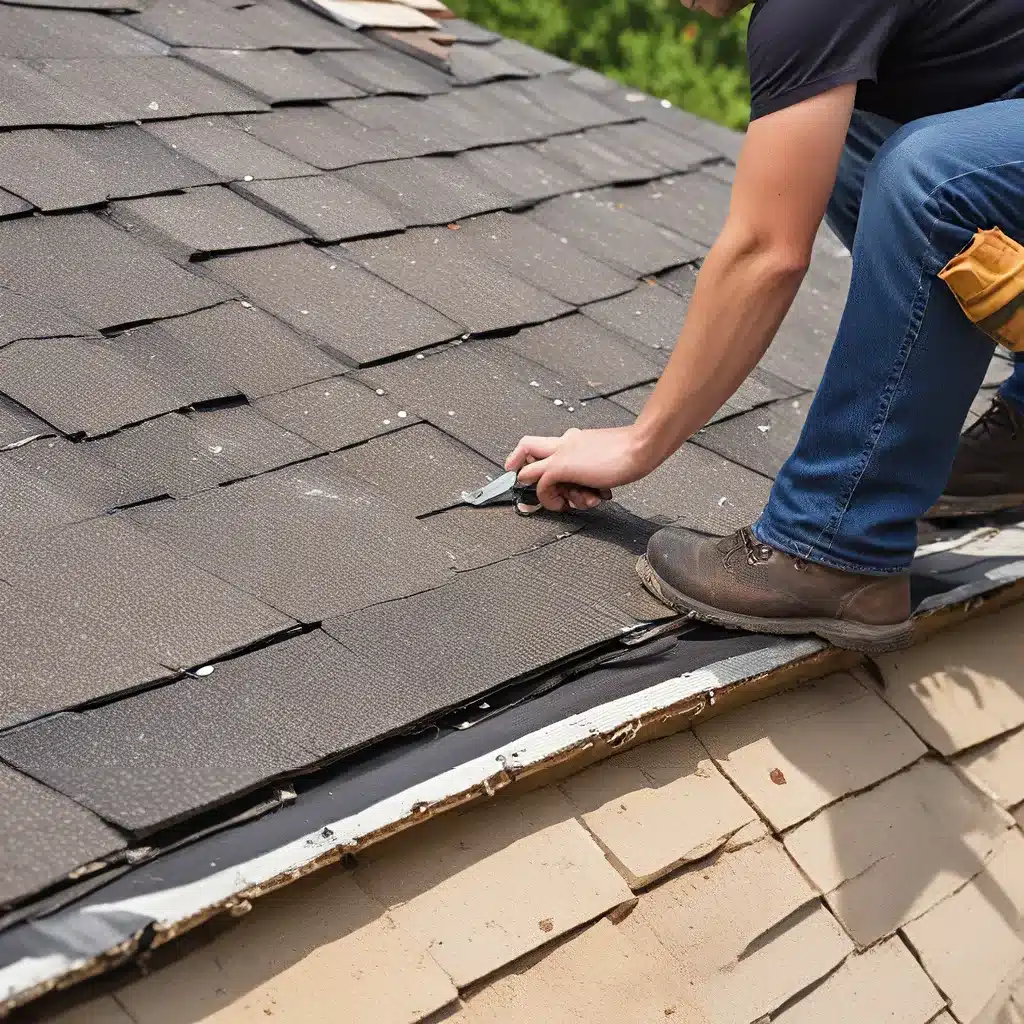
Slippery Slopes and Shingles: My Journey to Roof Safety Mastery
You know, I used to think that roofing was a simple enough job – just slap on some shingles, toss a few nails around, and voila! A brand new roof, right? Oh, how naive I was. It wasn’t until I nearly took a tumble off a steep-sloped roof that I realized the true dangers of working up there. Let me tell you, that was a wake-up call if I ever had one.
The Perils of Rooftop Work
These days, I can proudly say that I’m a roofing safety expert. But it wasn’t always that way. Back in the day, I’d waltz up onto a roof, confident that I could handle anything that came my way. Little did I know, I was one slip or trip away from a trip to the emergency room. According to OSHA, the most common accidents reported by roofers are slips, trips, and falls – and trust me, I’ve seen my fair share of those.
Imagine this: you’re up on a roof, balancing precariously on the edge, trying to get that last shingle in place. One wrong move, and suddenly you’re plummeting towards the ground, your heart racing a million miles a minute. It’s the stuff of nightmares, but for some roofers, it’s a harsh reality. And let’s not forget about the other hazards, like getting struck by falling debris, electrocuted by power lines, or even suffering from heat exhaustion in the blazing sun. Roofing work is no joke, my friends.
Identifying and Eliminating Rooftop Hazards
That’s why it’s so crucial to take roof safety seriously. The team at SafetyCulture has really helped me understand the importance of identifying and eliminating common rooftop safety hazards. From slippery surfaces to unprotected edges, these guys have got it all covered.
One of the first things they taught me was to always be on the lookout for those dreaded OSHA safety signs. You know the ones – the bright red “DANGER” signs that scream “TURN BACK, FRIEND, BEFORE IT’S TOO LATE!” Seriously, those things are not to be trifled with. If you see one of those, you better believe I’m high-tailing it off that roof faster than a jack rabbit.
And then there are the “WARNING” signs, the ones that say, “Hey, danger ahead, but you can probably still make it if you’re careful.” Those require a little more finesse, but the key is to make sure you’ve got the right safety gear and that you’re only allowing authorized personnel up there. Can’t be too careful, you know?
Ah, but the “CAUTION” signs – those are the ones that really make me chuckle. They’re like the little sibling of the safety sign family, always trying to act tough but really just a minor annoyance. Still, I always make sure to pay attention to those too, just in case.
Gearing Up for Rooftop Success
Of course, knowing how to identify these hazards is only half the battle. The other half is making sure you’ve got the right safety gear to protect yourself. As the team at Roofing Talk pointed out, roofers need to be equipped with all sorts of personal protective equipment (PPE) – from harnesses and safety ropes to hard hats and slip-resistant shoes.
And let me tell you, I’ve learned the hard way that skimping on safety gear is a big no-no. I remember this one time, I thought I could get away with just a basic hard hat and some gloves. Well, let’s just say I ended up with a few bruises and a newfound appreciation for the importance of a good safety harness.
These days, I won’t even set foot on a roof without my full ensemble of PPE. It’s like my own personal supersuit, complete with all the bells and whistles to keep me safe and sound. And you better believe I make sure my team is just as decked out as I am. After all, safety isn’t just my responsibility – it’s everyone’s.
The Art of Roofing Inspections
But you know, roof safety isn’t just about the gear and the signs. It’s also about being proactive and staying on top of things. That’s where roofing inspections come into play. According to the experts at Ontario.ca, there’s no one-size-fits-all answer when it comes to how often you should inspect your roof. It really depends on a variety of factors, like the climate, weather patterns, and the specific needs of your roof.
Personally, I like to err on the side of caution and do a thorough inspection at least twice a year. And let me tell you, those pre-start talks we have before each job are no joke. We cover everything from the potential hazards to the proper safety protocols, and I make sure my team is as prepared as can be.
Putting It All Together: A Roofing Safety Masterclass
So there you have it, folks – the ins and outs of roofing safety, straight from the (figurative) horse’s mouth. I may have started out as a roofing newbie, but now I can proudly say that I’m a safety expert, thanks to the wealth of knowledge I’ve gathered from sources like Reading General Contractor, Roofing Talk, and SafetyCulture.
And you know what? I wouldn’t have it any other way. Roofing may be a risky business, but with the right knowledge, gear, and mindset, it can be a whole lot safer – and a whole lot more rewarding. So if you’re out there, getting ready to tackle a roofing project, remember: safety first, always. Trust me, your body (and your wallet) will thank you.
Related posts:
No related posts.




